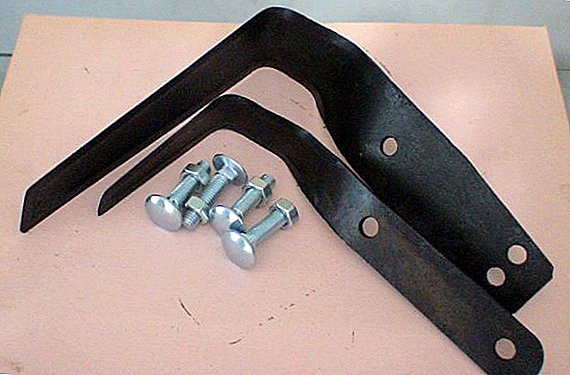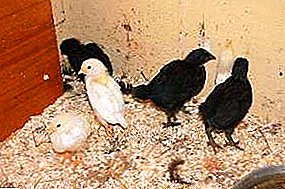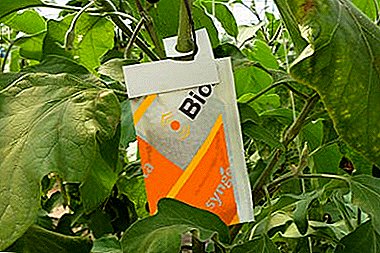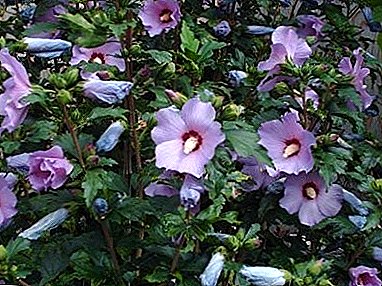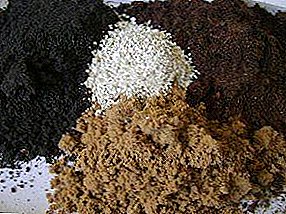 In order to improve the varietal properties of plants, in botany they are grafted. This is the connection of parts of different plants and their gradual engraftment of each other. Inoculations are made single, two-and even four-story, in order to obtain plants resistant to adverse conditions with high yields. The graft and the stock are distinguished in the graft. It is the stock that determines the properties of the plant, which was obtained after vaccination. This article will look at different types of rootstocks, compatibility of different types of fruit trees, the main
In order to improve the varietal properties of plants, in botany they are grafted. This is the connection of parts of different plants and their gradual engraftment of each other. Inoculations are made single, two-and even four-story, in order to obtain plants resistant to adverse conditions with high yields. The graft and the stock are distinguished in the graft. It is the stock that determines the properties of the plant, which was obtained after vaccination. This article will look at different types of rootstocks, compatibility of different types of fruit trees, the main
What is a stock
This is the main part of the grafted plant. The stock does not determine the variety of the future plant, unlike the scion, but it provides good nutrition of the plant and its resistance to various stresses. 
The stock is intentionally grown or obtained from an old tree, which has lost its fruitful qualities, but is still strong enough to serve as a rhizome for new graft chips.
Important! Interspecies vaccinations are very short-lived. They have low compatibility, and the grown tree often has an unattractive appearance because of too large branches of the graft. Often heavy graft fruits injure a weak basement. Be careful when combining plants of different species.
What are stocks
Stocks are divided according to origin. Each species has its advantages and disadvantages over the other.
Clonal or vegetative
From the name it is clear that such base plants are obtained by vegetative propagation by cuttings of the parent tree with low yields, but good physical characteristics. 
The cuttings have one hundred percent similarity of the genetic code with the original plant, adopt from it the type of root system, the limit of growth and adaptation to specific climatic conditions or soil.
The main advantage of the clone stock is the guaranteed production of a plant with the required characteristics after cultivation.
"Clones" are divided into dwarf, semi-dwarf and medium-sized. The root system of vegetative seedlings is well developed, but superficial, so after vaccination, such plants need supports, which incurs additional costs.
Learn more about what tree grafting is, how to graft trees in the fall and spring, how to graft fruit trees.
A positive feature of this feature is that such trees can be planted in areas with shallow groundwater. Graft, planted on a vegetative stock, begins to bear fruit in the third year, and this is a very good indicator. 
The clone stock is suitable for those who want to get full-fledged fruit-bearing plants as quickly as possible and in 7-10 years to completely change the structure of the garden.
Did you know? The well-known expression “grow in a willow pear” characterizes the person to whom it belongs as a frivolous dreamer. Nevertheless, such vaccinations actually exist. Only they do not relate to the real willow, but to a verbolic pear with thin silver foliage. This is an Asian variety of pears, which successfully assumes even such typical varieties of the middle band as Bera.
Seed
These stocks do not guarantee the characteristics of the parent plant. For such cultivation, take seeds of particularly resistant trees, such as the Antonovka apple or rowan tree.
As a result of growing tall trees with a well-developed deep root system are obtained. They will not need additional supports, but will require caution when choosing a site for planting. 
A garden grown on seed stock will produce a consistently high yield for 40–50 years after planting.
The negative feature of this stock is its short fruiting (on the 8-10th year after planting) and a high probability of death of the plant due to the close occurrence of groundwater. In the care of such trees are more troublesome due to the high growth and branched crown.
Seed rootstock suitable owners who lay the garden for many decades and in the near future to change tree varieties are not going to.
Scion compatibility with stock
In the process of grafting should be guided by the principle of "similar to similar." Incompatibility of species leads to the fact that on adult plants thickening and deformation of wood are formed, leading to the death of the tree.
In this case, the result becomes clear only in the third or fourth year of growth, when fine chips begin to turn into a full-fledged tree. In order not to lose a large amount of time, you should combine the graft and rootstock of the same species, experimenting exclusively with varieties. 
Important!To make clonal cuttings better rooted, before boardingKeep them for eighteen hours in a special rooting solution. It can be purchased at any gardening shop. This solution will give impetus to the cambial tissues, and they will begin to form the roots at the site of the cut.
Apple stock is preferable to grow from "Antonovka" and the local forest apple. Pear prischepy well take root on the "Berah", "Bessemyanki" and wild pears. Plums grafted on the turn and local forms of wild cherry plum give a particularly rich harvest.
Cherry graft grows fruitful and viable on the stock of Magaleb cherry and "Vladimirka".
Learn how to prepare and store cuttings for grafting.
When grafting, be guided by the timing of ripening chips and clips. It is undesirable to take chips and pinch with different ripening terms.
During the formation of the fruit such a crown will not receive the required volume of water and nutrients, and the fruits will be underdeveloped. 
The following diagram demonstrates interspecific vaccinations. 
How to grow seed stock
To get a healthy seedling, you need to choose a quality seed suitable for the stock of the variety.
Seed harvesting
Only mature fruits are suitable for this purpose. If you work with stone fruit, the seed material can be distinguished from them immediately. In all other cases, the fruit should be put on a warm sunny window sill for 10-12 days for final ripening.
When the time expires, cut the fruit with a sharp knife and remove the core together with the seeds. The pulp can be recycled.
Spread the seeds in a thin layer on canvas or parchment paper and dry them in a warm, well-ventilated room. Stir the seed periodically so that it dries evenly and does not rot. 
After drying, store them in canvas or canvas bags until sowing. Store seeds at a temperature of + 8 ... +10 degrees and humidity not higher than 60%.
Did you know? It is not possible to understand for sure in which year the botanists first inoculated plants. In literature, the term "vaccination" in the meaning known to us appeared inthe first in 1814 in the encyclopedic dictionary of the Brockhaus publishing house.
Planting seeds
In order to "wake up" the seeds and cause them qualitative changes prior to germination, carry out the stratification. On average, the period of stratification for stone fruit lasts five months (from November), and for seed seeds - three months (from January).
Soak the seeds in warm water for three days, changing the water every 10-12 hours. Mix one portion of seeds with three portions of fresh sawdust and pour the mixture into containers or boxes a layer thick. 
Soak them at a temperature of +6 degrees until they start to hatch, then put them in a refrigerator and store at zero degrees until sowing.
Prepare the soil for spring sowing in the fall. Add 8 kg of manure, 50 g of superphosphate, 30 kg of peat and 20 g of sodium chloride per square meter of the garden plot. Dig the surface of the plot to a depth of 30 cm to mix the fertilizer with the soil.
In April, sow seed material separated from sawdust into even grooves with a one-meter row spacing and close it to depth. Mulch the furrows with a thin layer of loose peat.
Seedlings care
At first, the seedlings will hatch very thickly. When the seedlings throw out the fourth true leaflet, thin them out, removing the unviable sprouts, to a density of 1 sprout every 2 cm of soil. The second time, thin out after three weeks. 
Pre-moisten the soil under the seedlings. Leave one sprout in every 6 cm. Then lightly tamp the raised topsoil and water the seedlings again.
Important! Take care of just grafted plants from excessive moisture. Slices are susceptible to pathogenic microflora and very often rot or dry. If the cuts do not overlap, rub the cambium tissue with a garden pitch.
Water sprouts regularly as the topsoil dries. The soil should be loosened a day after each watering so that the moisture obtained by the plants is retained in the lower layers of the soil.
Loosen the soil near the seedlings with a hopper to a depth of 8 cm, and even the upper layer with a rake. Combine weeding with loosening, since weeds are more easily removed from loose soil.  Prophylactically treat seedlings against powdery mildew and other fungal diseases with fungicides.
Prophylactically treat seedlings against powdery mildew and other fungal diseases with fungicides.
The fungicide drugs include such as "Switch", "Thanos", "DNOC", "Fundazol", "Brunka", "Signum", "Merpan", "Cumulus", "Teldor", "Kuproksat".
Once a month, fertilize the sprouts with nitrogen and potash fertilizers, every two weeks pour them with a weak manure solution.
Before digging out the sprouts at the end of the season, remove any remaining leaves from them and pour the soil for better separation of the earthy coma.
How to grow clone stock
For a vegetative stock, long-term stratification is not required, but the growing process in this case is more complicated.
Procurement of cuttings
Start harvesting green cuttings in the twenties of June. Make sure that the cuttings are no less than 1 cm thick, and the length is not less than 50 cm. Thin and short chips will dry before their accretion with the scion begins. 
The lower part of such shoots should be woody, and the top - light green, with five or six true leaves. Cut the shoots with a sharp mock or grafting knife at a 45 degree angle 5 cm below the first bud. One shoot divided into two cuttings. Clean the bottom sheets, leave only the top two.
Did you know? Despite the fact that the graft and stock are initially connected as separate branches and only the graft bears fruit when copulating, the rootstock of the adult plant miraculously begins to affect the quality of the crop. So, after grafting pear cuttings on irgu, pear fruits acquire a characteristic lilac shade. The same applies to rowan rootstocks. They paint the graft harvest in red tones and significantly reduce its size.
Landing
Plant the cuttings in the soil reserved for the mother liquor. For each cutting, take a separate hole with a depth of 2-3 cm. The aisles should be 60 cm wide. Plant the stock so that the leaves of neighboring shoots do not touch. 
Immediately after planting, moisten the soil with basal irrigation, grumble with sifted peat.
Primary care
Maintain constant moderate soil moisture. Water sprouts as the topsoil dries. Under each sprout pour 0.5 liters of warm water. Start feeding 20 days after planting.
Alternate watering with nitrogen and potash fertilizers, making it every three weeks. Loosen the soil the next day after each watering to break the crust formed on it and prevent excessive evaporation of moisture. Weed begin to start simultaneously with loosening when the shoots reach growth.
Vaccination site
For a two or three year stock, two methods of grafting are suitable: graft splitting and copulation. For grafting, cut the stock with a sharp knife to a height of 15 cm from the soil, forming a straight cut. 
Split it to a depth of 3-4 cm exactly in the middle. Sew two sides of the lower edge of the graft to a height of 4-5 cm to form a flat end. Insert the graft into the gap in the stock, not bringing 0.5 cm to the bottom of the splitting.
Fix the graft with a soft fabric tape, wrap with tape and cover the cut on the stock with garden pitch.
Important! A late ripening stock will not provide enough nutrients to the graft with early ripeness. Try to combine plants with the same biological rhythms.
To graft plants with copulation, make cuts at a 20 degree angle not less than 4 cm on chips and a sharp knife with a sharp knife. Align the cuts so that the cambial layers of both shoots coincide. Fix the inoculation with tissue tape and tape. 
For an adult stock, both of the above methods are suitable. When graft grafting on an adult tree, two or even three scions can be placed in one slot of the stock, if the cut and the slot are made on the skeletal branch.
When cut on a thin growth branch, grafting is carried out in the same way as in a two-year stock.
Unusual stocks
The following options for rootstocks can be considered as experimental, since interspecific vaccinations give the best yield.
Rowan
The unique frost resistance of mountain ash will protect the fruit graft from freezing. The disadvantage of this vaccination is that in the third year of fruiting the fruit of the fruit graft begins to shrink and finally degenerate around the seventh year. 
With the help of graft on mountain ash, you can extend the life of a fruit tree damaged by rodents or frost. Apple and quince grow best with rowan.
Hawthorn
An indispensable stock for the northern regions. Significantly increases the frost resistance of the scion and more slowly affects the size of the fruit. The best hawthorn pear, especially the varieties "Kruger", "Bera" and "Goverla".
In the third or fourth year after the start of fruiting, the fruits of the graft begin to turn red, but this does not affect the taste and yield.
Did you know? The first cultivated apple orchards appeared on the territory of the Slavic countries in the XI century. These were the monastic gardens of Kievan Rus, where, under Yaroslav the Wise, they began to breed new apple varieties using the prischep method. The basis for botanical works at that time were only four species of wild apple trees: forest, Chinese, livolistnaya and berry.

Irga
It provides an excellent basis for growing dwarf pear trees. You need to constantly monitor the graft on the irga - cut off additional shoots and put supports under the branches so that the heavy stem of the rootstock will not be injured by heavy graft branches and fruits.
The stock is a convenient way to propagate the plant, giving a bountiful high-quality harvest. The stock does not affect the productivity of the scion, its function is to provide the chips with nutrients, moisture and increase its resistance to frost or drought.
The stock can be grafts and seeds. The cutting method of reproduction allows you to save all the necessary properties of the mother plant and harvest the first crop within three to four years after vaccination, and seed to get tall plants with a long fruiting period. 
Using a healthy young stock guarantees a good survival rate of the scion and obtaining a rich harvest of the fruits you need.
Feedback from network users



